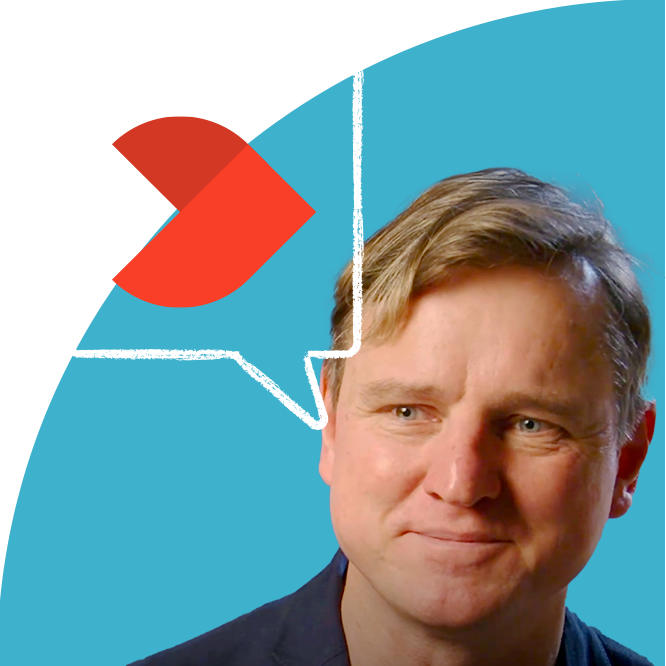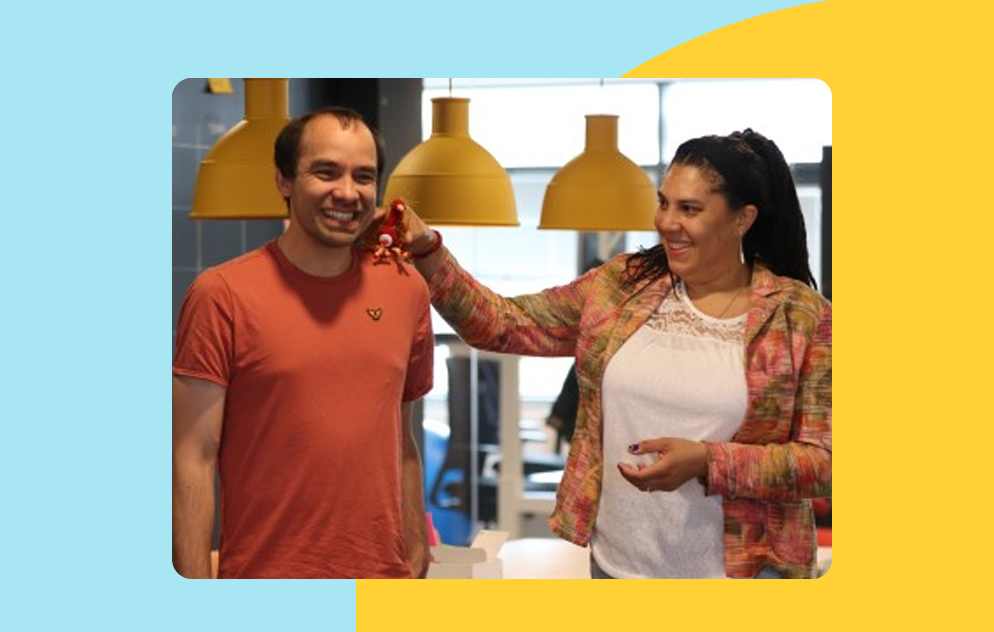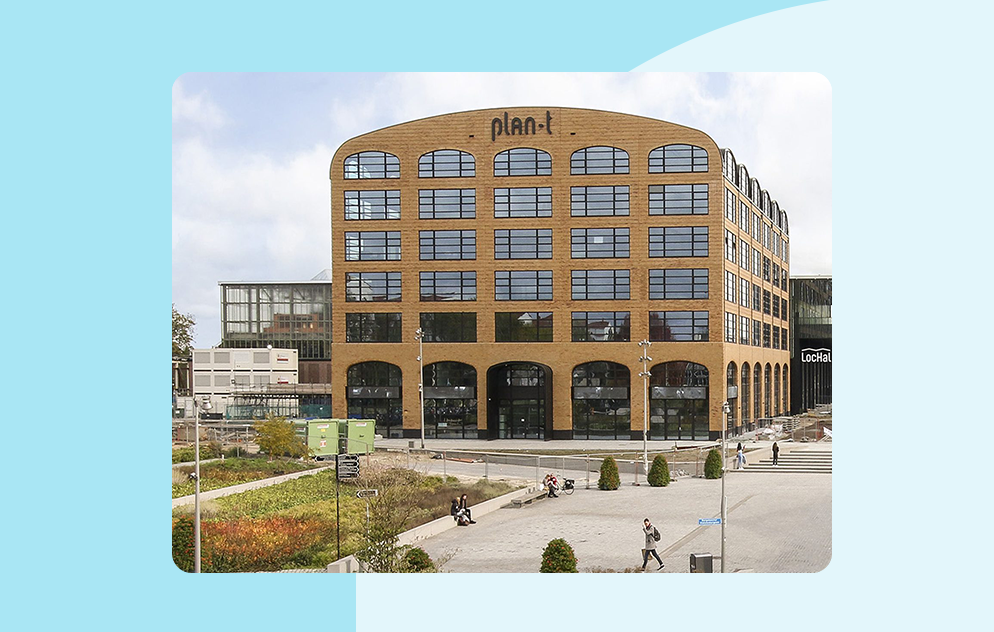The future of Product and Technology at TOPdesk
The winds of change are blowing through TOPdesk. The key question is how we can continue to grow and improve as an international software company. Of course, we are not just talking about software, customers and figures. At the heart of it all is the company structure. And this could have been much more functional and efficient, as it turned out. We talked to Benno Richters, Chief Product and Technology Officer (CPTO) at TOPdesk, about what exactly this means for our development teams.

Hi Benno, when and how did you join TOPdesk, what positions have you held and how did you eventually become our CPTO?
Benno: “I joined TOPdesk in 1997 as a part-time software developer while I was still a student. This makes me the longest serving TOPdesk employee after Wolter (our CEO), although I was away for several years as well. When I came back, there were great opportunities for me abroad. For example, I helped set up a development department in the German office. Then I set up the Hungarian branch of TOPdesk and worked and lived there for a long time. I only returned to the Netherlands in the summer of 2023. Since then, I have been responsible for the Product & Technology domain, since 1 July 2024 under the title CPTO.”
About growth and efficiency
We are going through a period of transition where every level of management is undergoing change. Can you tell me what made this reorganisation necessary?
Benno: “TOPdesk has, of course, grown rapidly over the years and with this growth, forms of collaboration have emerged organically. For example, when a new branch was opened, a managing director was appointed. They became responsible for that branch and everything that happened there, without much central coordination.
Given the size of the company and the changing world around us, this was no longer the most efficient way to achieve our growth ambitions. That meant we had to think about how we wanted to organise ourselves. What do we want to look like as a modern technology company? With this in mind, we designed a new organisational model.”
What do we want to look like as a modern technology company? With this in mind, we designed a new organisational model.
What does the management change mean for the Product and Technology domain?
Benno: “It means going back to the more traditional hierarchical structure that we once moved away from. At the same time, we have mirrored other modern tech companies.
Specifically, such a big change means that a lot of people will have a different manager and work with different people. We are now mainly looking for candidates to fill senior roles and new positions. These will be people who have seen other companies, and then you realise that TOPdesk really is the odd one out. People are often surprised by our processes and the way we interact with each other. We really do have a unique culture, which doesn’t have to be a stumbling block. The new colleagues we are looking for are people who, because of their experience, are used to dealing with a company they do not know.
Within Product and Technology, I chair the leadership team and together we oversee the application process. It is our responsibility to find these people who fit us externally as well.”
Working together for impact
What is your vision for the future of Product and Technology at TOPdesk?
Benno: “Firstly, it is to complete this organizational transformation into a functional structure. We aim to complete this in the first half of this year.
Another important goal is to modernize the user experience of our product. We want to help our sales colleagues by addressing as many of the challenges and problems customers face as possible.
Thirdly, we are also improving our software architecture. That’s a bit of a technical story, but an important goal. Of course, our product is quite old and after 25 years, TOPdesk software needs constant maintenance. We want to use the latest technologies and replace the old ones; a challenge we are constantly working on. Modernizing the user experience is also part of this.”
We are currently looking for new colleagues at the management level. Think UX design managers and engineering managers. How will these new colleagues make their mark on the organization?
Benno: “They can have a big impact. The transition is about transparency, so that people know who to ask questions to. The people in these positions have a lot of responsibility. They will have to learn the P&T domain and have a clear vision of the strategic goals. In this way, they will soon understand how the teams they are responsible for make an impact and contribute to the company goals.”
We're not suddenly going to become a very formal organization. The new structure will simply make it easier to get answers to questions.
What does the transition mean for our culture? Think about our DNA of freedom, trust and responsibility.
Benno: “We have been working on this for as long as TOPdesk has existed. It’s important to recognize that we used to be organized in a much more traditional way, and we are now returning to that traditional structure. Freedom, trust and responsibility remain as important as ever, and this transition will not change that.
We will be reintroducing more hierarchical lines, creating a more layered organizational structure, but that doesn’t mean we can no longer call ourselves a flat organization. You can still speak to everyone at TOPdesk and make appointments with everyone. You can still sit next to the CEO at lunch and afterwards, everyone brings their own dirty plate back to the kitchen, that sort of thing.
We’re not suddenly going to become a very formal organization. The new structure will simply make it easier to get answers to questions. And even if you disagree with something, you know where to go. It clarifies a lot.”
Developing more than just software
At TOPdesk, we have a generous training budget, 10 to Grow. How will people in your domain use this effectively?
Benno: “In the new structure, it is easier to discuss the training budget because you are sparring with a manager who sees what you are working on every day and what you might be facing. Both as a person and in your work.
This used to be the job of the talent lead, a role that is disappearing because that person was not necessarily in your own domain. As a result, they did not always have an idea of what you were doing and what difference you could make. It is important to think carefully about how you use the training budget and how you help people grow in their careers.”
Finally, let’s take a quick look ahead. Where will we be in a year’s time? How do you define success?
Benno: “In a year’s time, I would like to see a good part of the user experience modernised. We will be helping our colleagues in the Revenue domain by removing all the obstacles they face in doing business.
And of course, the organizational structure should be well implemented within a year. An important measure of this is that everyone in our domain understands what this structure looks like. I want all of us to know where to turn with questions, doubts or concerns about the impact we want to have. In short, I want us to talk to each other about accountability.”


